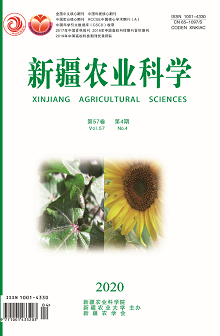|
|
Toxicity of two Acaricides mixed with Organosilicon to T. turkestani and the Safety Evaluation of A. cucumeris
ZHENG Xin, NING Zhongxiong, FAN Jiwen, LU Wei
2020, 57(4):
642-649.
DOI: 10.6048/j.issn.1001-4330.2020.04.008
【Objective】 In this paper, the safety of abamectin, pyridaben and the mixture of two acaricidal agents with organosilicon were determined.【Methods】 A.cucumeris is an excellent natural enemies, which belongs phytoseiid mites (Phytoseiid), Amblyseius genus (Amblyseius).The method of the leaf-disc method was used to measure the toxicity of abamectin, pyridaben and the mixture of two acaricidal agents with organosilicon to A. cucumeris.【Results】 In 24 hours, the LC50 of abamectin and pyridaben were 31.96 mg/L and 39.43 mg/L, respectively, with a safety coefficient of 0.665,8, which was general; 0.197,2, which was low; the toxicity selection index was 12.152,1 and 10.295,0, which were moderate positive. The LC50 of avermectin + organosilicon was 18.82 mg/L, the safety coefficient of avermectin + organosilicon decreased from 0.665,8 to 0.560,1, and the toxicity selection index increased from 12.152,1 to 22.141,2. The LC50 of pyridaben + organosilicon was 40.15 mg/L, the safety coefficient of pyridaben + organosilicon decreased from 0.197,2 to 0.286,8, and the toxicity selection index decreased from 10.295,0 to 8.524,4. In 48 hours, the LC50 of abamectin and pyridaben were 16.47 mg/L and 17.45 mg/L, respectively, with a safety coefficient of 0.343,1, which was low; 0.085,8, which was low; the toxicity selection index was 10.104,3, moderate positive selectivity, 7.968,0, positive selectivity. The LC50 of avermectin + organosilicon was 9.08 mg/L, the safety coefficient of avermectin + organosilicon decreased from 0.343,1 to 0.270,2, and the toxicity selection index increased from 10.104,3 to 11.947,4; indicating that the use of organosilicon significantly increased the contact effect of avermectin on T. turkestani, but the toxicity to the A. cucumeris was lower. The LC50 of pyridaben + organosilicon was 16.54 mg/L, the safety coefficient of pyridaben + organosilicon increased from 0.085,8 to 0.118,1, and the toxicity selection index decreased from 7.968,0 to 7.450,5; indicating that the use of organosilicon did not improve the contact effect of pyridaben on T. turkestani, but increased the toxicity to A. cucumeris.【Conclusion】 Therefore, in the process of using acaricide to control T. turkestani, abamectin or abamectin + organosilicon is more safe to A. cucumeris.
|

